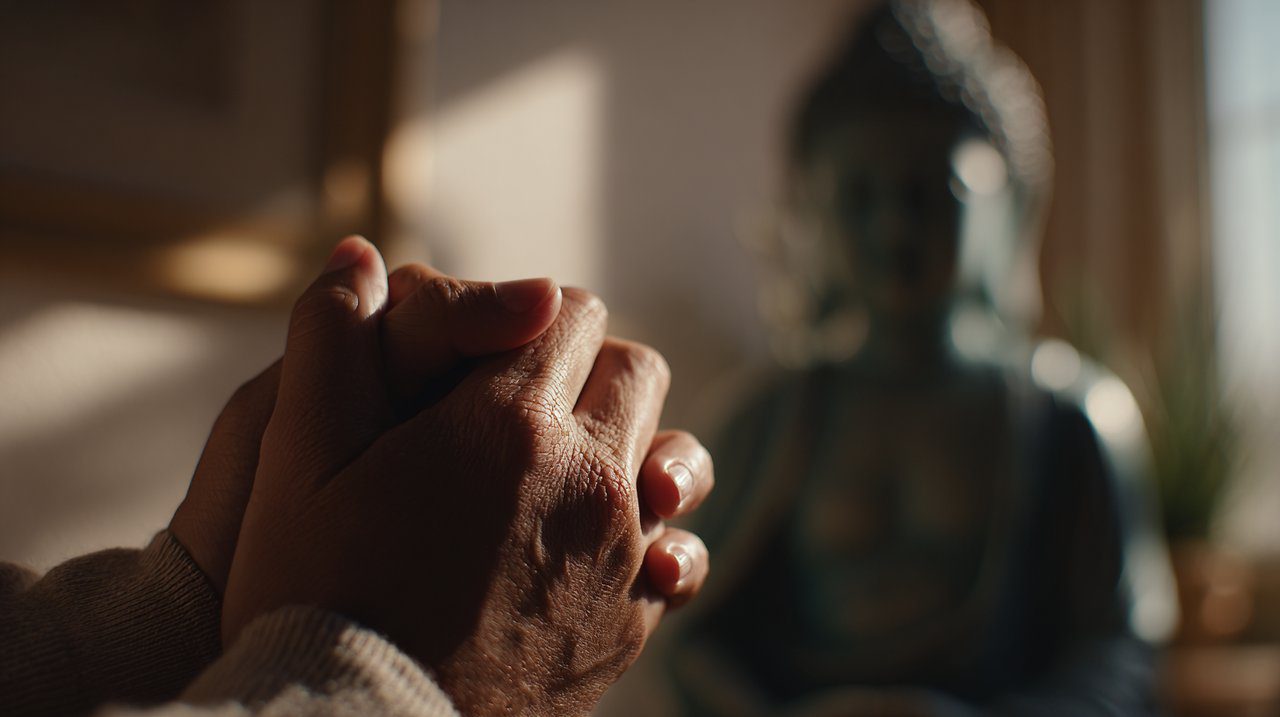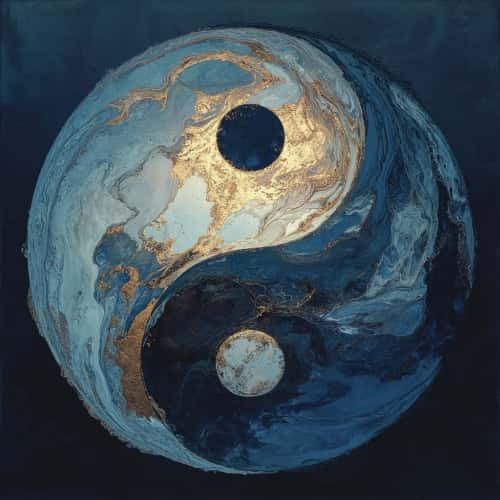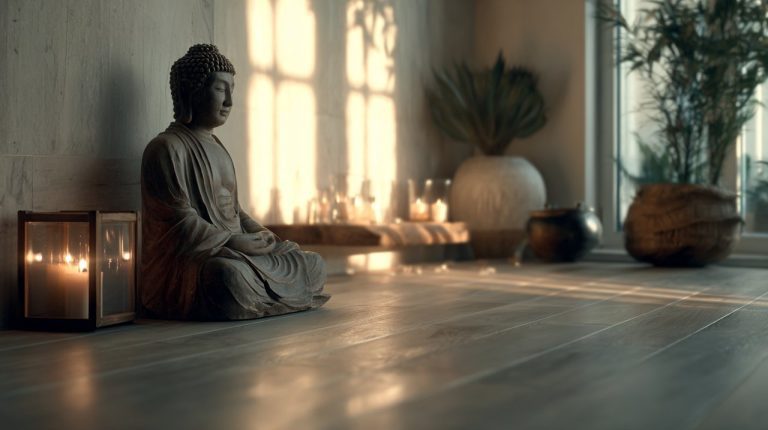The Silent Language of Buddha Hands: Guiding Your Spiritual Practice
The hand gestures of Buddha statues hold significant insights, often going unnoticed amidst their beautiful design. These figures offer a unique opportunity for a more focused, intentional engagement with your spiritual path. Instead of simply choosing based on looks, imagine understanding each gesture as a deliberate psychological anchor, designed to guide your mind.
This guide will help clarify a practical approach to selecting Buddha statue hands. We’ll move from their ancient symbolism to making their practice personally meaningful, ultimately helping you align with your deepest intentions.
Unpacking the Silent Language of Mudras
Every specific hand gesture, known as a mudra, is far more than just a pose. Think of it as a non-verbal affirmation, a kind of psychological blueprint for cultivating a particular state of being. By understanding the core meaning of these Buddha statue hands, you gain access to centuries of insights into human consciousness.
Take the Dhyana Mudra, for example. Here, the hands rest gently in the lap, palms upward, with thumbs lightly touching. Its symmetrical, bowl-like shape creates a sense of visual and physical equilibrium, naturally fostering internal balance and deep contemplation. This gesture acts as a powerful visual reminder, gently guiding your mind towards stillness and focused awareness.
Recognizing these Buddha hand gestures as a silent, universal psychological language is the first step towards making a truly meaningful selection.
Finding Your Focus: Matching Mudras to Your Intentions
Choosing a mudra means aligning that specific gesture with your unique inner goals. Whether you’re seeking inner peace, fearless resolve, or deep clarity, each meditation mudra carries a distinct psychological resonance designed to amplify your intentions.
Consider the Varada Mudra, for instance. With an open hand, palm forward, fingers pointing down, it symbolizes compassion and giving. By focusing on these qualities, it subtly encourages a state of selfless peace, often by shifting your perspective outward and reducing internal mental friction.
Before making your choice, take a moment for quiet reflection. What intention do you most need to cultivate in your life right now? This personal inquiry transforms the selection process into an active, mindful practice, making the statue an engaged partner in your journey of self-discovery.
Beyond the Hand: The Full Picture of Buddha Symbolism
While the mudra is certainly central, it’s just one piece of the larger message conveyed by a Buddha statue. The overall symbolism—including posture, facial expression, and any accompanying elements—all work together to amplify the mudra’s psychological impact. The hands are part of a cohesive psychological statement.
Consider a Buddha in the Bhumisparsha Mudra, the earth-touching gesture symbolizing enlightenment. When depicted in a serene, seated posture, this powerfully reinforces a message of grounded wisdom and unwavering resolve, giving the hand gesture an even deeper sense of stability.
This combination creates a powerful and consistent psychological prompt, integrating the hand gesture with the entire figure to foster a harmonious and impactful presence for your focus and inner work.
Mudras as Psychological Anchors
From a pragmatic viewpoint, mudras aren’t magical spells. Instead, they function as powerful visual and physical cues that act as sophisticated psychological anchors. Think of them as ancient tools of environmental psychology, specifically designed to prime your mind for certain states.
Our brains are constantly seeking patterns and associations. So, a particular gesture quickly links itself with a feeling or an intention. It’s like a mental shortcut: just as a specific scent can trigger a vivid memory, a chosen mudra can trigger a meditative state or reinforce a desired mindset.
This is a pre-programmed mental prompt. Through consistent exposure, it helps to solidify your intentions and facilitate a deeper self-awareness. Traditions like Zen Buddhism, which emphasize direct experience and conscious awareness, align perfectly with this view of mudras as highly effective tools for self-regulation.

“The human mind thrives on anchors. A mudra is an ancient, refined anchor for your deepest intentions, a silent collaborator in your quest for focus and inner peace.”
Bringing Mudras into Your Daily Practice
Once you’ve consciously chosen a Buddha statue whose mudra aligns with your personal intentions, the next step is actively integrating it into your daily routines. Place your chosen statue in a prominent, respectful spot where you regularly engage in meditation or mindfulness practices.
It’s more than just a decoration; it serves as an active participant. During meditation, use the mudra as a focal point for your gaze, allowing its meaning to gently settle into your awareness. If you use mala beads for mantra recitation, the statue’s mudra can be a silent, unwavering guide, reinforcing the intention behind each bead counted.
The true power of the mudra unfolds when it becomes an active, consistent part of your practice—a constant, gentle reminder of the path you’ve chosen for personal growth and focus.
So, as we’ve explored, selecting a Buddha statue’s mudra goes far beyond just its appearance. It’s a deeply intentional act, a journey from understanding its silent psychology to actively integrating it into your daily life.
By thoughtfully choosing a mudra that aligns with your personal intentions, a beautiful object transforms into a powerful ally—a constant visual anchor for your meditation and personal growth. Take a moment to reflect on your deepest intentions today.
The real wisdom resides in choosing which silent gesture will become your steadfast guide on the path to more focused meditation and inner clarity. It’s about making ancient wisdom work for you, right here, right now.
💡 Preguntas Frecuentes
Buddha hand gestures, or mudras, function as sophisticated psychological anchors. They are non-verbal affirmations and visual cues designed to guide the mind towards specific states of being, fostering focus, stillness, and the cultivation of particular intentions or qualities.
The Dhyana Mudra, characterized by hands resting in the lap with palms upward and thumbs touching, creates a symmetrical, bowl-like shape. This form promotes visual and physical equilibrium, naturally guiding the mind towards deep contemplation and internal stillness.
To effectively align a mudra with personal goals, engage in quiet reflection to identify the intention you most need to cultivate (e.g., inner peace, resolve, clarity). Then, select a mudra whose symbolism resonates with and amplifies that specific intention, transforming the selection into a mindful practice.
The overall symbolism of a Buddha statue, including its posture, facial expression, and accompanying elements, works cohesively with the mudra. For instance, a serene seated posture with the earth-touching Bhumisparsha Mudra reinforces a message of grounded wisdom and unwavering resolve, amplifying the hand gesture's psychological prompt.
To integrate a chosen mudra, place the statue in a prominent, respectful spot for meditation or mindfulness. During practice, use the mudra as a focal point for your gaze. It can also serve as a silent guide during mantra recitation with mala beads, consistently reinforcing the intention behind your practice.








